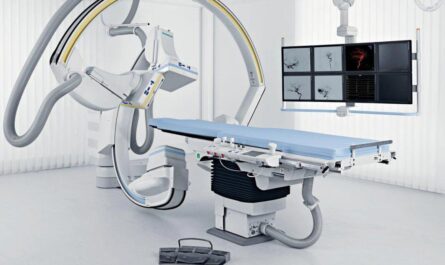Dental implants are a major advancement in the field of dentistry that allow patients to replace missing teeth in a natural and permanent way. An implant is a small titanium screw that is surgically placed into the jawbone beneath the gums at the site of the missing tooth. Once integrated with the bone, the implants acts as a replacement for the root of the tooth. An artificial tooth, called an abutment, is then attached to the implant to replace the missing tooth and complete the process. Implants provide numerous benefits over other tooth replacement options as they do not rely on neighboring teeth for support and feel just like natural teeth.
Types of Dental Implants
There are two main types of dental implants used today:
Endosteal Implants: These are the most commonly used type of dental implants. An endosteal implant is placed directly into the jawbone through a minor surgical procedure. Once properly integrated with the surrounding bone, they provide a strong and stable foundation for replacing missing teeth.
Subperiosteal Implants: For patients who have very thin jawbones and insufficient bone height, subperiosteal implants are used. These implants are placed on top of the jawbone just beneath the gumline rather than being embedded into the bone. They are used when the bone is not thick enough to place an endosteal implant.
The Implant Process
Getting Dental Implants involves a few appointments with the dentist or oral surgeon over a period of time:
1. Initial Consultation: The dentist examines the patient’s mouth and any missing teeth. Diagnostic tests like x-rays and CT scans are done to assess the bone health and structure. A treatment plan is created.
2. Surgery: During this appointment, small titanium screws called implants are surgically placed into the jawbone where teeth are missing. In some cases, additional bone grafting may be required.
3. Healing: Implants need about 3-6 months of healing time to fuse securely with the jawbone. During this time, a temporary denture can be worn.
4. Abutment Connection: Once implants are fully integrated with the bone, tiny posts called abutments are connected on top to anchor the new teeth.
5. Placement of Crowns/Bridges: The final prosthetic teeth called crowns or bridges are cemented onto the abutments to complete the treatment.
Benefits of Dental Implants
Due to their stability and natural appearance, dental implants have numerous advantages over other tooth replacement options:
– Secure and Long-Lasting: Implants bond directly to the jawbone for a lasting solution, unlike loose dentures. On average, implants can last 15-20 years when placed correctly.
– No Need for Extraction: Getting implants does not require the removal of neighboring healthy teeth for support, unlike bridges.
– Confidence with Biting and Chewing: Implants feel just like real teeth and allow one to eat and grind food easily.
– Natural Aesthetics: The artificial teeth screwed onto implants match the color, shape and alignment of other real teeth for a realistic smile.
– Avoid Bone Loss: Dental implants prevent extensive bone resorption associated with tooth loss and bone atrophy caused by ill-fitting dentures over time.
Drawbacks of Dental Implant Treatment
While dental implants are a reliable solution, there are some drawbacks associated:
– High Cost: Implant therapy is more expensive than other options like bridges or removable dentures. Cost depends on the number of implants needed and complexity of the case.
– Surgery Required: Placement of implants involves an oral surgical procedure with potential for risks like swelling, bleeding or nerve injury.
– Long Treatment Duration: The entire implant process from surgery to placement of final teeth takes several months as implants must properly fuse with bone.
– Risk of Failure: In rare cases, implants may fail to integrate with the bone and get rejected or have complications requiring removal. The success rate is around 95%.
– Cleaning: Oral hygiene around implants requires extra effort to ensure good gums and bone health around the implants for their lifetime.
Risk Factors for Dental Implant Failure
While dental implants offer predictably successful results in most patients, some risk factors may increase failure potential:
– Systemic diseases like uncontrolled diabetes that affect wound healing.
– Radiation therapy involving the oral cavity or head/neck region in cancer patients.
– Conditions like bruxism (teeth grinding) that impose excessive forces on implants.
– Smokers as the toxins delay bone healing needed to integrate implants.
– Insufficient bone volume needing complex bone grafting techniques before implantation.
– History of infections around implants increasing risk of repeated infections.
– Placement in the lower jaw being riskier than upper jaw implants.
*Note:
1. Source: Coherent Market Insights, Public sources, Desk research
2. We have leveraged AI tools to mine information and compile it



